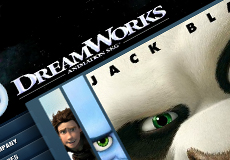By
Meghan CoyleDecember 1, 2014
DreamWorks Animation is working on new technology that will bring its pre-rendered CGI films to virtual reality headsets like the Oculus Rift and Gear VR. To support headtracking, the company has developed “Super Cinema” technology that pre-renders the entire 360-degree image so that no matter which way a user turns his/her head, the frame is already generated. This technology would allow consumers to have an immersive VR experience even on lower-end hardware. Continue reading DreamWorks Developing 360-Degree Rendering for VR Films
By
Rob ScottNovember 11, 2014
Technicolor’s Rennes Research & Innovation Lab is a 193,750-square-foot facility located in France’s version of Silicon Valley — Rennes’ Via Silva eco-city. Initially launched by CEO Frederic Rose in 2012, the facility grouped colorists, researchers and engineers together at one site. Today, teams at the R&D lab are working on a host of technologies for content creators and consumers related to virtual reality, augmented reality, stereoscopic video, 3D audio, the Internet of Things, and much more. Continue reading Technicolor Imagines the Future at Research & Innovation Lab
By
Don LevyAugust 12, 2014
Visual effects and animation workflows — and the technology to make them more powerful, flexible and cost-efficient — are a focus of attention as SIGGRAPH 2014 opens its exhibit floor this week to computer graphics and tech professionals in Vancouver. Nvidia’s next gen Quadro processors, announced this morning, are indicative of tools and technology designed to handle greater complexity and higher resolution; incorporate cloud services; and access projects remotely, often via mobile devices. Continue reading SIGGRAPH 2014: Nvidia Unveils Next Generation Quadro GPUs
By
Meghan CoyleApril 15, 2014
Today’s cloud services — including CGI, digital intermediate, asset management and storage — are allowing small productions to realize their big visions with less money. Independent films and live events are more frequently using cloud computing to get the rendering and storage services they need without the high costs of traditional physical infrastructure. Productions can also save money because cloud computing helps speed up the long shooting and filmmaking process. Continue reading Cloud Computing Proves an Asset for Productions on a Budget
By
Cassie PatonNovember 26, 2013
A team from Disney Research Zürich led by Wojciech Jarosz has developed a new rendering technique that is expected to save animators significant time in the editing process of feature films. The new computational algorithm, which is being presented at this week’s ACM SIGGRAPH Asia conference in Hong Kong, can reduce rendering times for scenes that are affected by light — like those with water and smoke — by a factor of up to 1,000. Continue reading New Animation Technology to Save Production Time and Cost
By
Cassie PatonOctober 23, 2013
DreamWorks Animation is using new technology to make animation significantly easier and more cost effective. At a CIO conference in San Francisco Thursday, chief technology officer Lincoln Wallen introduced new software he developed that uses DreamWorks’ private cloud of high-performance computers and parallel processing to speed up the complex process of computer animation. It allows animators to use a touch screen to make real-time changes — a significant development. Continue reading New DreamWorks Animation Software Taps into Private Cloud
By
emeadowsMarch 12, 2013
Tony DeRose, Pixar’s senior scientist, gave a lecture on “Math in the Movies” at New York’s Museum of Mathematics. His job consists of translating principles of arithmetic, geometry and algebra into computer software that can render objects or power physics engines. He gave the talk in part to explain why aspiring animators and game designers need to have a solid base in mathematics. Continue reading Pixar Scientist Discusses Importance of Math in Animation

